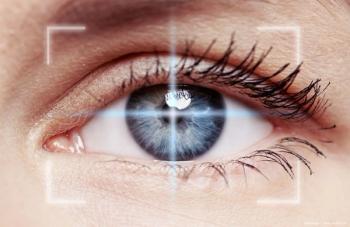
Wavefront-guided PRK after previous keratorefractive surgery safe, effective in study
Wavefront-guided PRK in eyes with high aberrations after keratorefractive surgery was highly predictable and safe, with the vast majority of patients within 0.50 D of the intended correction, said Edward Manche, MD, of Stanford University School of Medicine, Stanford, CA.
Wavefront-guided PRK in eyes with high aberrations after keratorefractive surgery was highly predictable and safe, with the vast majority of patients within 0.50 D of the intended correction, said Edward Manche, MD, of Stanford University School of Medicine, Stanford, CA.
The study included 25 eyes of 21 patients. Fourteen patients had undergone a previous LASIK, nine had had radial keratotomy, and two had had PRK. All patients were treated with the VISX S4 excimer laser and the VISX WaveScan aberrometer.
Dr. Manche reported that there was a significant transient hyperopic overshoot 1 month after the treatment, especially in the patients who had undergone a previous LASIK procedure. He reported that 61% of patients had 20/20 or better.
The predictability of the PRK was very good, with 83% of patients within 0.50 D of the intended correction. No complications developed. All eyes had completely re-epithelialized in 7 days and no haze developed.
The safety was excellent. At 6 months, 23% had a one line or greater increase in the best-corrected visual acuity. At this time point, the uncorrected visual acuity had improved to 20/16.
Patients reported resolution of ghosting of vision. The topography was markedly improved with better centration, and there was a significant decrease in total root mean square values and specifically coma.
"We obtained excellent uncorrected visual acuity and best spectacle-corrected visual acuity, with 23% of eyes having an increase of one or more lines of best-corrected vision at 6 months," Dr. Manche said. "The safety and predictability of the procedure were excellent. There was a significant delay in uncorrected and best spectacle-corrected visual recovery. There was a slight reduction in the total root-mean-square values and not change in trefoil or spherical aberration."
Newsletter
Don’t miss out—get Ophthalmology Times updates on the latest clinical advancements and expert interviews, straight to your inbox.
















































.png)


